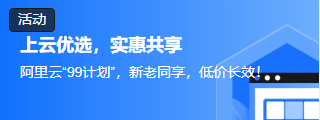Microsoft Expression Web - 水平导航
在本章中,我们将学习如何向网站添加水平导航或菜单项。
步骤 1 − 要创建菜单项或水平导航,让我们在包含菜单项列表的 index.html 文件中的 <div id = "top-nav"> 中添加以下代码。
<div id = "top-nav">
<ul>
<li></li>
<li></li>
<li></li>
<li></li>
</ul>
</div>
步骤 2 − 这是顶部菜单的简单项目符号列表。要创建超链接,请转到 设计视图 或 代码视图。
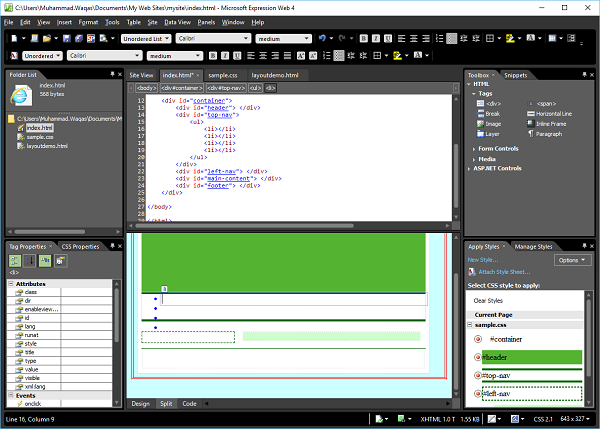
步骤 3 − 选择要用作超链接的项目,然后按 Ctrl + K。
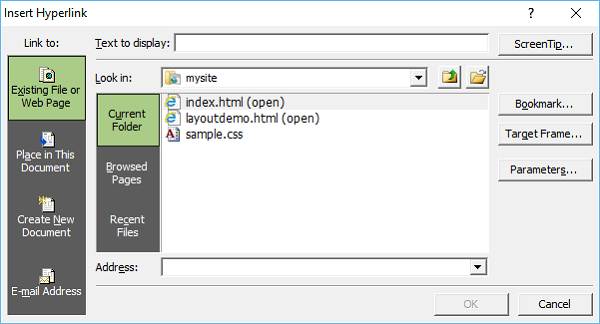
步骤 4 − 单击"屏幕提示…"按钮。
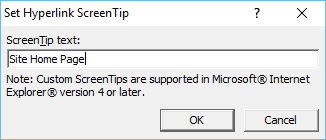
步骤 5 −输入您想要作为屏幕提示的文本,然后单击"确定"。
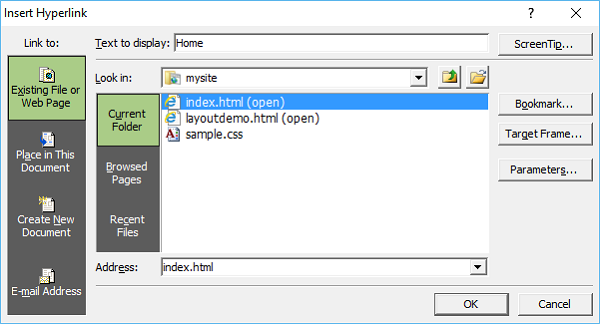
步骤 6 − 在 要显示的文本 字段中,输入 Home 并选择 index.html 文件,然后单击"确定"。
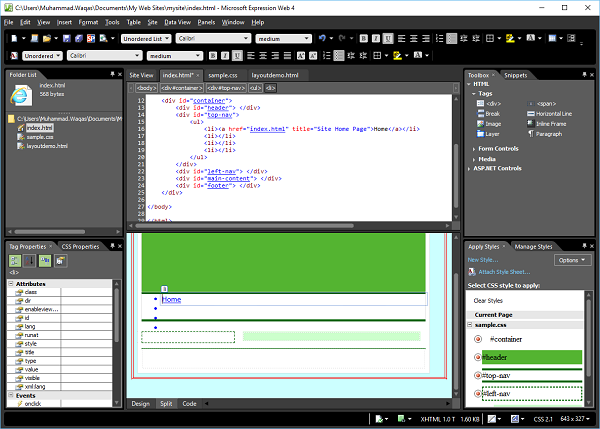
步骤 7 − 同样,添加其他菜单项的超链接,如以下代码所示。
<!DOCTYPE html PUBLIC "-//W3C//DTD XHTML 1.0 Transitional//EN"
"http://www.w3.org/TR/xhtml1/DTD/xhtml1-transitional.dtd">
<html xmlns = "http://www.w3.org/1999/xhtml">
<head>
<meta content = "text/html; charset=utf-8" http-equiv = "Content-Type" />
<style type = "text/css"></style>
<link href = "sample.css" rel="stylesheet" type = "text/css" />
</head>
<body>
<div id = "container">
<div id = "header"></div>
<div id = "top-nav">
<ul>
<li><a href = "index.html" title = "Site Home Page">Home</a></li>
<li><a href = "index.html" title = "Menu Item 1.">Menu Item 1</a></li>
<li><a href = "index.html" title = "Menu Item 2.">Menu Item 2</a></li>
<li><a href = "index.html" title = "Menu Item 3.">Menu Item 3</a></li>
</ul>
</div>
<div id = "left-nav"> </div>
<div id = "main-content"> </div>
<div id = "footer"> </div>
</div>
</body>
</html>
步骤 8 − 要设置顶部导航的样式,请转到管理样式面板。
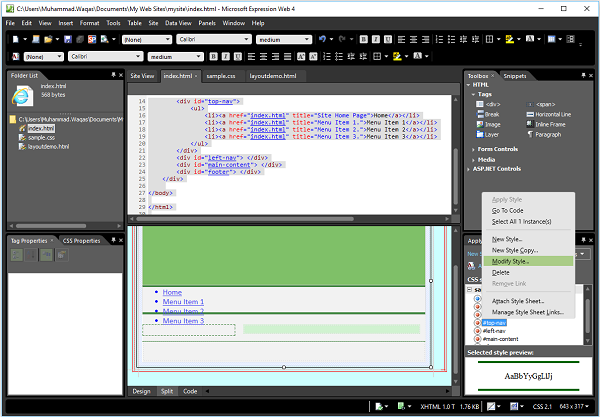
步骤 9 − 右键单击"#top-nav"并选择修改样式。选择"边框"类别并将宽度更改为细。
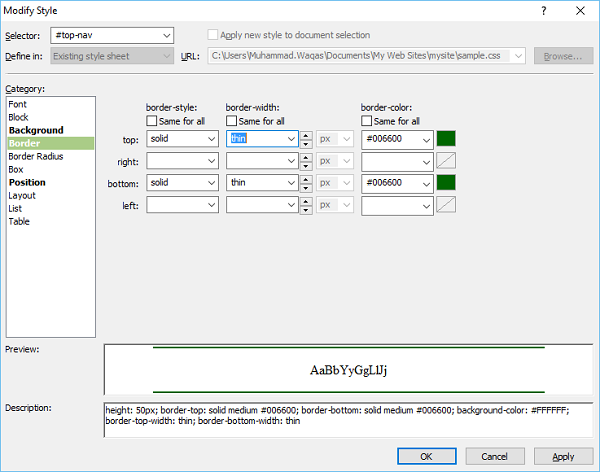
步骤 10 −选择 Box 类别并取消选中填充"所有相同",然后在顶部和底部字段中输入 10。

步骤 11 − 转到 Position 类别。
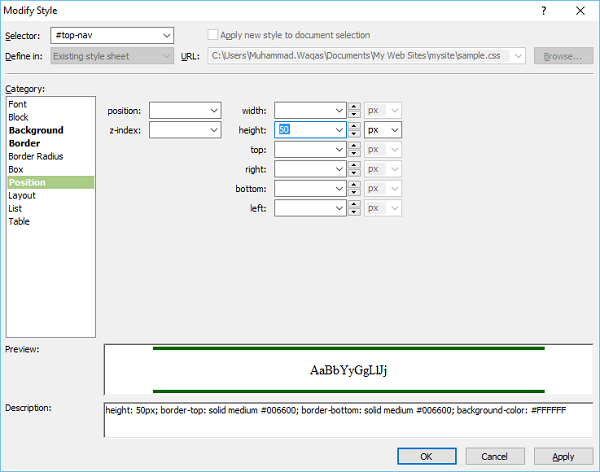
步骤 12 − 从 height 字段中删除 50,然后单击"确定"。在"应用样式"面板中,单击"新建样式…"
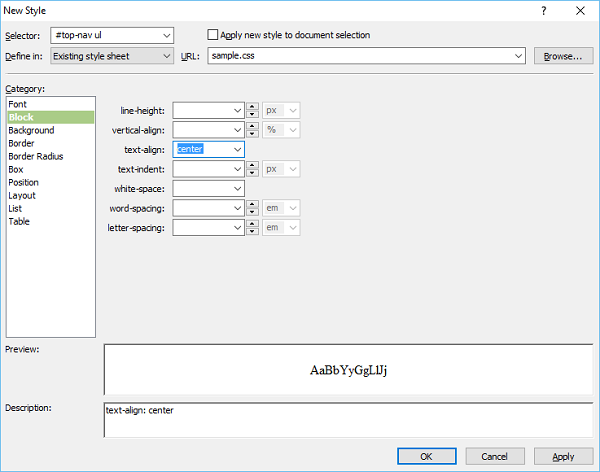
步骤 13 −在选择器字段中输入 #top-nav ul,然后从"定义在"下拉列表中选择现有样式表。在块类别中,从测试对齐字段中选择中心,然后转到列表类别。
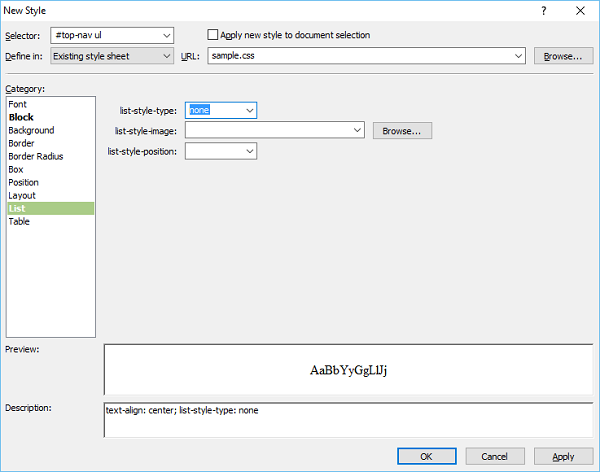
步骤 14 − 从 list-style-type 字段中选择 none,然后单击确定。
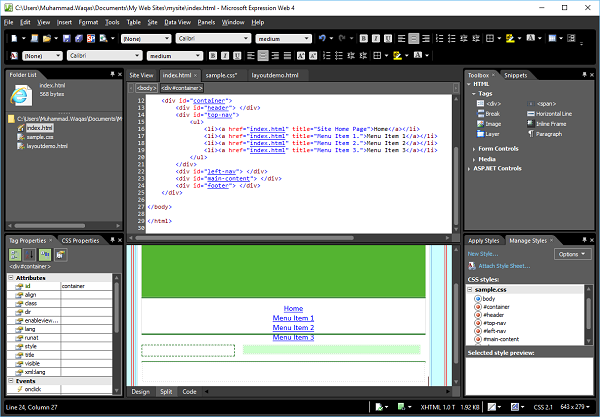
步骤 15 − 再次从 应用样式 面板中单击新建样式... 在选择器字段中输入 #top-nav ul li。然后从"定义在"下拉菜单中选择现有样式表并转到布局类别。
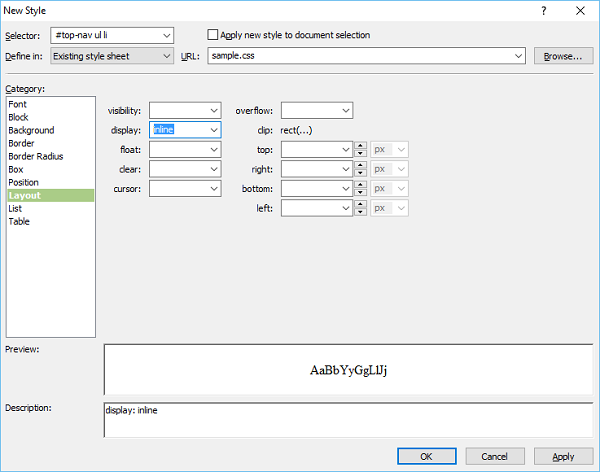
步骤 16 − 从 display 字段中选择 inline 并单击确定。

步骤 17 −转到"应用样式"面板,单击"新建样式..."在"选择器"字段中输入 #top-nav ul li a,然后从"定义在"下拉菜单中选择现有样式表,并选择白色作为字体颜色。
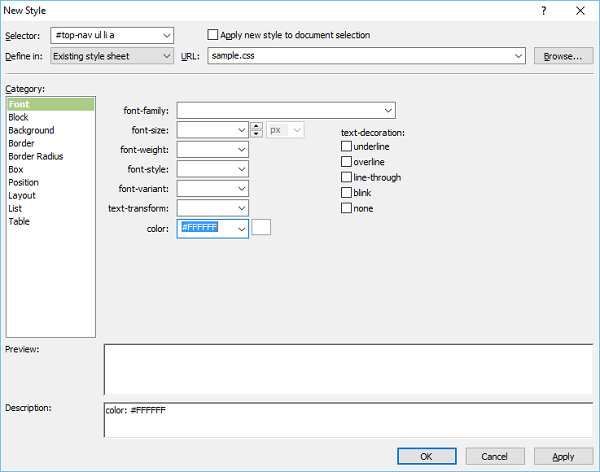
步骤 18 − 转到 背景 类别。
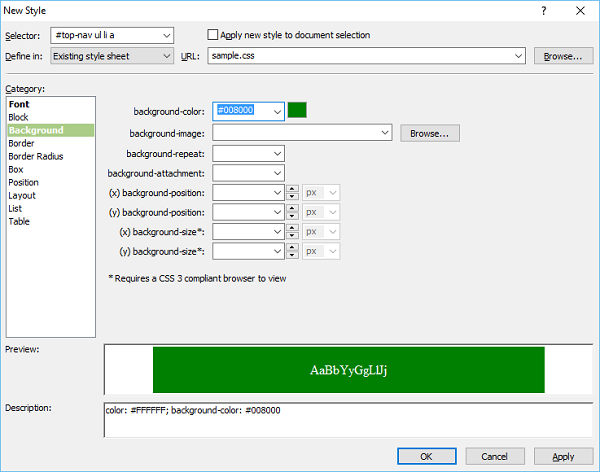
步骤 19 −选择 green 作为背景颜色,然后转到 Box 类别。
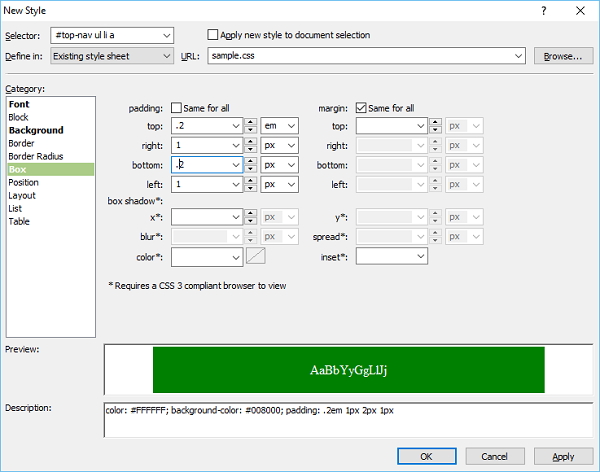
步骤 20 − 设置 padding 值,然后单击"确定"。
步骤 21 − 现在让我们再次转到"应用样式"面板并单击"新建样式"。在"选择器"字段中输入 #topnav ul li a:hover,然后从"定义在"下拉列表中选择"现有样式表",并选择 black 作为 字体颜色。
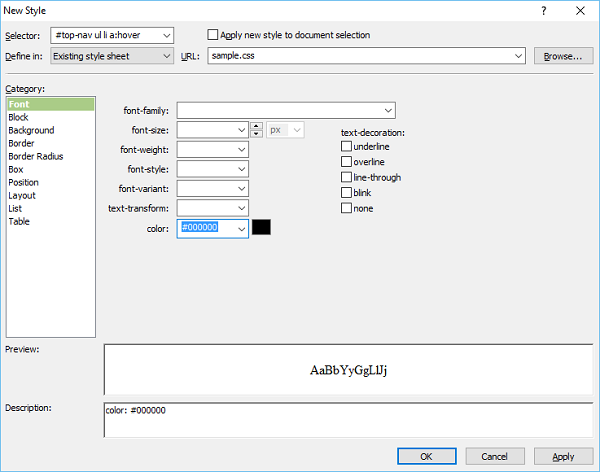
步骤 22 −现在转到背景类别。
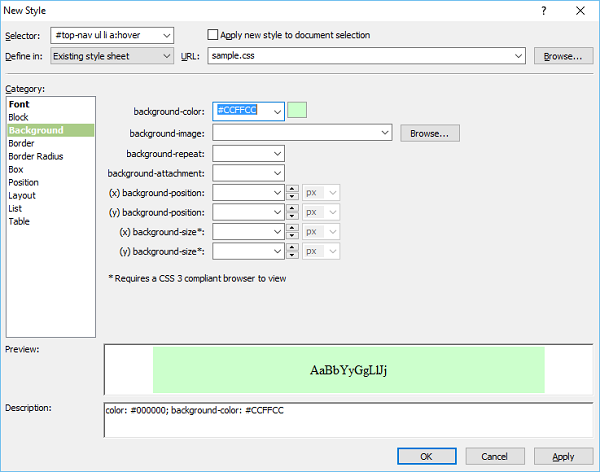
步骤 23 − 当鼠标悬停在菜单项上时,选择菜单选项的背景颜色,然后转到边框类别。
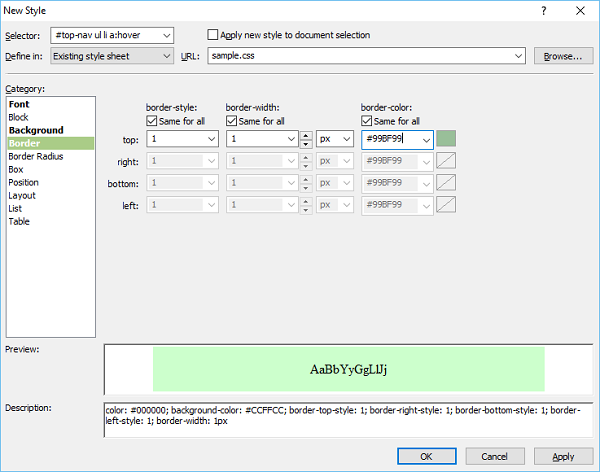
步骤 24 − 选择边框样式、宽度和颜色,然后单击"确定"。要检查其外观,请转到"文件"菜单并选择"在浏览器中预览"。
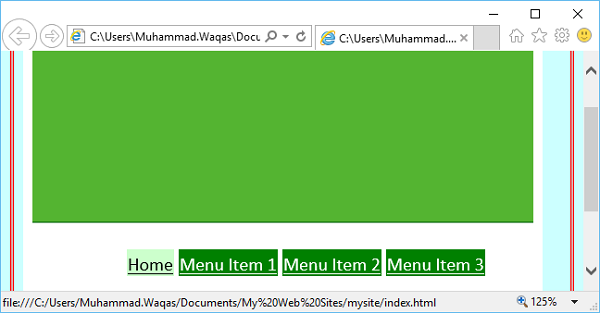
当您将鼠标悬停在任何菜单项上时,它将更改背景和字体颜色。

